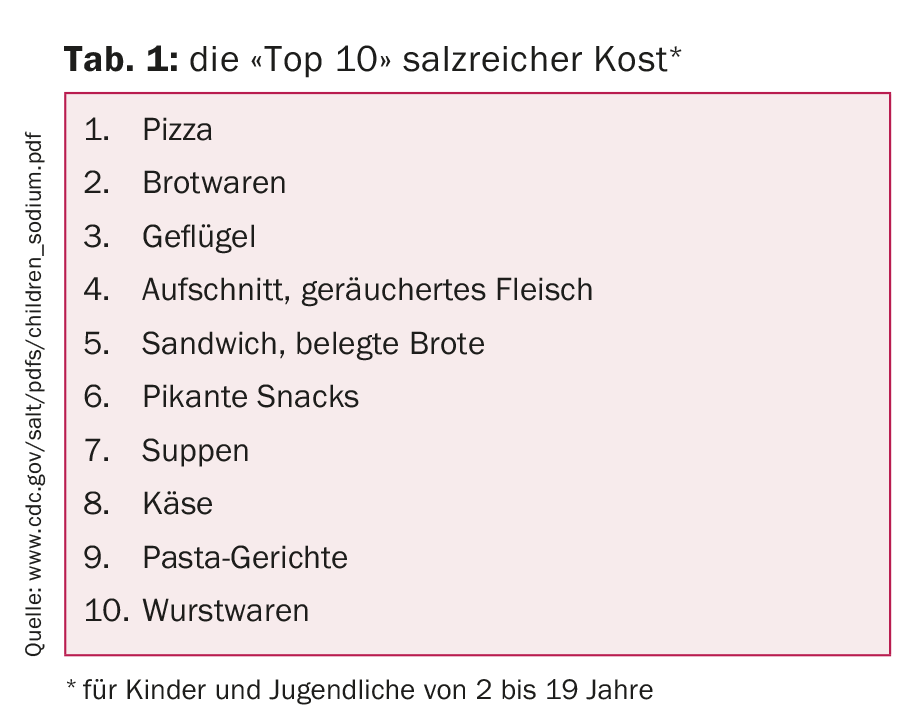Childhood and adolescent obesity is the precursor to cardiovascular and metabolic disease in adulthood. About one third of all children and adolescents in the USA are affected, and about 10% in Germany and Switzerland. Preventive interventions in high-risk groups and schools are currently considered the most effective approach to addressing the epidemic of fat children. At the European Congress of Cardiology in Rome, experts called for action.
Nevertheless, the steady increase in the number of overweight and obese children observed over many decades, especially in industrialized nations, seems to have leveled off at a high level since the turn of the millennium. In the USA, for example, traditionally one of the countries with the highest proportion, the rate of obese children and adolescents aged 6-19 (body mass index >95th percentile) has remained constant at around 17% since 2001. Nearly one-third of children and adolescents are overweight (BMI >85th percentile) or obese, and about %–5% are severely obese (defined as BMI >120% of the 95th percentile or ≥99th percentile). Percentile). The situation is significantly better in many countries in Western Europe, and best of all in wealthy Asian countries such as Japan and South Korea. But even here, at least 5% to more than 10% of children and adolescents are usually too fat.
Body mass index of children should be recorded regularly
“Body mass index should be documented regularly in children and adolescents,” emphasized Stephen Daniels, MD, a pediatrician at the University of Colorado at Denver. If the value exceeds the 85th or even 95th percentile, you should be concerned and take countermeasures. “The atherosclerosis process begins very early in life and can potentially be influenced by modifications of behavior and environmental factors,” said Professor Laura Hayman, M.D., of the University of Massachusetts at Boston.
The negative health effects of obesity are well documented, not only in adults but also in children and adolescents. Childhood obesity is associated with many comorbidities, such as hypertension, dyslipidemia, insulin resistance, metabolic syndrome, and also depression and psychosocial abnormalities, Hayman reported. New data on this were presented at the ESC Congress.
In the PEP Family Heart Study of nearly 11,000 children and adolescents from Germany aged 3-18 years, the prevalence of hypertension (>95th percentile systolic or diastolic blood pressure) was nearly doubled in overweight study participants compared with those of normal weight (Haas GM et al, Abstract P6400). As BMI increased, the number of children and adolescents with hypertension continued to rise: from about 20% in those with obesity class II (BMI >120%-≤140% of the 95th percentile) to more than 60% of boys and more than 70% of girls with obesity class III (BMI >140% of the 95th percentile). All the girls from this group and 90% of the boys also had low HDL-C levels (<5th percentile). In addition, the risk of hypertriglyceridemia was increased almost 5-fold in obese children and adolescents.
High waist circumference also correlates with elevated blood pressure in children, even when BMI is still within the normal range. This was demonstrated in a Brazilian study with data on about 3400 school children aged 6-11 years. Echocardiographic studies have demonstrated the association between higher BMI and left ventricular hypertrophy in another study (Harada K et al, P4620). Vascular ultrasound has been used to document endothelial dysfunction in children with essential hypertension and even those with white coat hypertension.
Intervention needed as early as possible
Intervention should be made as early as possible, Hayman said. Most important, he said, is guidance on a healthy diet and encouraging physical activity. Both factors, unhealthy high-salt diets (Table 1) and the steady decline in physical activity among children in recent decades, are among the most important reasons for the increase in overweight among children and adolescents, according to preventive physicians. According to a meta-analysis of 26 studies, physical activity among adolescents decreased by an average of 7% per year between 1977 and 2006.

Population-level interventions using the approach of education on healthy eating and physical activity, however, are probably not effective enough, Daniels said. Rather, the focus should be on behavior change techniques, particularly in at-risk groups. These included, for example, families with low socioeconomic status, parents who were themselves overweight, smoked, or had obesity-associated diseases such as diabetes. If possible, interventions should take into account the child’s age and developmental stage, Daniels said. A first step, he said, is to encourage breastfeeding of newborns. Parents should be made aware to avoid early rapid weight gain. The transition to conventional nutrition after weaning is also often difficult. Already in childhood, the focus should be on a diet rich in fruits and vegetables with a low fat content and, if possible, regular consumption of fish. Children should be guided to engage in physical activity that is safe and fun for them. At a minimum, children should be physically active for 60 minutes a day, and more exercise can of course be even more effective in preventing obesity, Daniels said.
Evidence suggests that physically demanding activities are more effective than moderate ones, Hayman added. The focus should be on aerobic exercise, supplemented by exercises to strengthen muscles and bones.
Parents also continue to have a big influence on nutrition and physical activity in school-age children, Daniels said. Adherence to real meals and avoidance of snacks should be encouraged. Young people, especially girls, are at risk of a dramatic decline in physical activity, he said. In addition, the end of the growth phase is another critical period in which many adolescents gain significant weight. During this phase, parents should continue to try to help influence their children’s diet and physical activity.
Ideal cardiovascular health in childhood can best influence the cardiometabolic profile in adulthood, Hayman emphasized.
Dr. Stefan Storcksdieck from Brussels called for support for the EU’s obesity prevention action plan for 2014 to 2020. The goal here, he said, is to provide healthier environments, especially in schools and preschools.
Source: European Society of Cardiology (ESC) Annual Meeting, August 27-31, 2016, Rome. Workshop: “Cardiovascular Risk Factors in Children and Youth: a call for action”.
CARDIOVASC 2016; 15(5): 38-39











